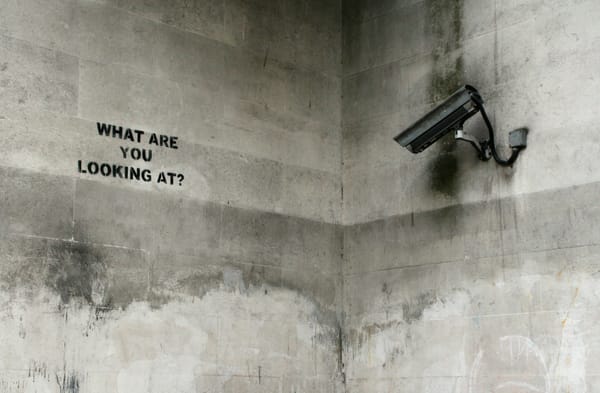Hidden threats: Shedding light on dark web dangers
"This growing threat highlights the critical need for SMBs to prioritise security to protect sensitive data and ensure business continuity."

Many of us have never been on the dark web, imagining it as a marketplace for selling illicit products in an online bazaar. However, the dark web is increasingly being used by highly sophisticated cyber criminals for illegal activities targeting businesses.
Small and Medium-sized Businesses (SMBs) are particularly attractive to cyber criminals because they hold valuable data, such as customer records, financial details, and legal documentation, yet may not have the complex cyber security defences of larger enterprises.
Recently, there has been a noticeable rise in hackers targeting SMBs, with more 35% UK SMBs experiencing a cyber incident in 2024. Further, hackers-for-hire malicious services are available for as little as $600.
This growing threat highlights the critical need for SMBs to prioritise cybersecurity to protect sensitive data and ensure ongoing business continuity.
The dark web is home to a variety of hidden threats that target businesses. Some examples include:
- Ransomware-as-a-Service (RaaS) kits: These make it easy for even non-technical criminals to launch ransomware attacks.
- Stolen credentials: Data such as employee login details is frequently sold on dark web marketplaces, granting unauthorised access to business systems.
- Phishing tools: are also widely available, enabling attackers to conduct social engineering campaigns that trick employees into revealing sensitive information.
- Botnets and distributed denial of service (DDoS) attacks: Criminals sell shady solutions which can disrupt online services and cause both financial and reputational harm.
- Corporate espionage: Spy services which offer access to intellectual property or trade secrets.
The impact of dark web threats
While any organisation can be targeted by criminals via these sorts of attacks, SMBs can face severe threats to their business, as their size, resources and balance sheets may mean the fallout of an attack could be harder for them to recover from or absorb.
One of the most immediate impacts is financial damage, with ransomware attacks being the most common source of losses. In these attacks, cybercriminals exploit vulnerabilities to infiltrate systems, encrypt critical files, and demand hefty ransoms for their release.
For example, an escrow firm in California suffered a devastating malware attack via a Trojan Horse that allowed criminals to access the company's systems and execute fraudulent wire transfers. This resulted in the loss of $1.5 million, ultimately forcing the company to close its doors.
The impact of attacks can extend beyond the initial breach. Outside direct financial consequences, organisations can also face substantial reputational damage when their data is compromised. In today’s digital age, where trust is a key differentiator, reputational damage can be even more costly than the initial financial impact.
A breach can quickly erode customer trust in the company’s ability to safeguard their personal information. This can result in decreased business, customer churn, and long-term harm to the brand’s image.
Legal repercussions are also a concern, especially with stringent data protection regulations like the European General Data Protection Regulation (GDPR) stipulations.
When sensitive information is exposed due to a cyberattack, organisations face investigations, fines, and lawsuits for failing to protect customer data adequately. Furthermore, the stolen data can be sold on the dark web, leading to potential fraud.
Leveraging AI to combat dark web threats
Fortunately, advancements in artificial intelligence (AI) are providing new ways to detect, prevent, and respond to these threats. AI can be used to automate the detection and response process. AI-powered tools can monitor dark web activity, identify stolen credentials, and respond to threats in real-time. By leveraging machine learning algorithms, these tools can also identify patterns in cyberattacks and predict potential risks before they escalate.
Some examples of AI applications include Natural Language Processing (NLP), which sees AI decode encrypted communications on dark web forums, helping security teams understand and anticipate emerging threats. AI-driven Web Crawlers can also uncover illicit marketplaces and data leaks, providing early warnings about compromised information related to your business.
Protecting your website from hidden threats
By understanding the threats, SMBs can take steps to protect their business from cyberattacks:
- Invest in automated malware protection: Deploy AI-powered tools that detect and remove malicious software in real-time, reducing the risk of infection and data loss.
- Integrate with web hosting security solutions: Use services that address DDoS attacks and block aggressive bots through server-level firewalls.
- Regular patch management: Keep all software up-to-date to eliminate vulnerabilities that attackers could exploit.
- Implement multi-factor authentication (MFA): Strengthen access controls by requiring additional verification layers, making it harder for unauthorised users to gain entry.
- Employee training: Educate staff on phishing awareness and secure practices to reduce human errors that could lead to breaches.
- Improving cyber hygiene
- Regularly audit websites: to ensure hackers have not put unwanted or unauthorised content on it.
- Choose strong passwords: make it as hard as possible for a hacker to guess your password. Ideally, the longer the password and the more varied the characters (e.g. capital letters, numbers and punctuation points), the better.
- Avoid public connections: only connect to your website’s backend via a secure, closed connection when doing website updates and maintenance, so hackers cannot exploit public entry points.
- Use SSL certificates: Similarly, ensure encrypted communication between your website and its users to protect sensitive data.
- Limit backend access: Implement role-based controls to restrict access and limit risks from unauthorised users.
The risks posed by dark web activities are escalating, especially for SMBs. It is crucial to adopt proactive cybersecurity measures, including AI-powered solutions and improved cyber hygiene, to stay ahead of potential threats. By prioritising website security, SMBs can safeguard their operations and maintain the trust of their customers, making cybersecurity a central component of their overall business strategy.
Suhaib Zaheer is SVP of Managed Hosting at Digital Ocean and GM at Cloudways




